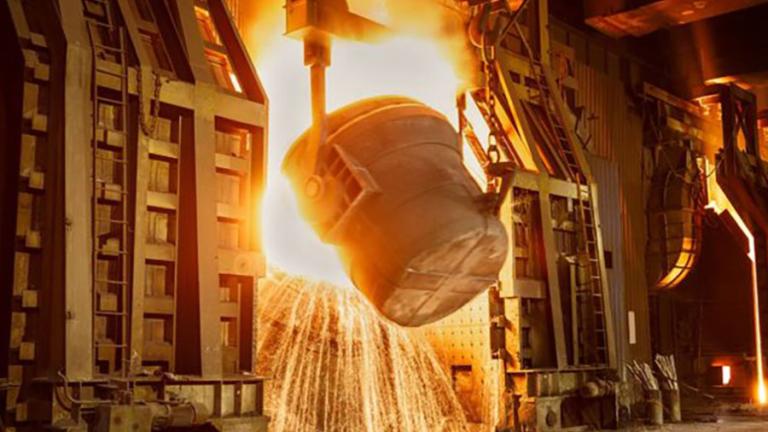
The long-term aspirational goal of the Paris Agreement on climate change is to cap global warming at 1.5 degrees Celsius above preindustrial levels, and thereby reduce the frequency and severity of floods, droughts, wildfires, and other extreme weather events. Achieving that goal will require a massive reduction in global carbon dioxide (CO2) emissions across all economic sectors. A major roadblock, however, could be the industrial sector, which accounts for roughly 25 percent of global energy- and process-related CO2 emissions — particularly within the iron and steel sector, industry’s largest emitter of CO2.
Iron and steel production now relies heavily on fossil fuels (coal or natural gas) for heat, converting iron ore to iron, and making steel strong. Steelmaking could be decarbonized by a combination of several methods, including carbon capture technology, the use of low- or zero-carbon fuels, and increased use of recycled steel. Now a new study in the Journal of Cleaner Production systematically explores the viability of different iron-and-steel decarbonization strategies.
Today’s strategy menu includes improving energy efficiency, switching fuels and technologies, using more scrap steel, and reducing demand. Using the MIT Economic Projection and Policy Analysis model, a multi-sector, multi-region model of the world economy, researchers at MIT, the University of Illinois at Urbana-Champaign, and ExxonMobil Technology and Engineering Co. evaluate the decarbonization potential of replacing coal-based production processes with electric arc furnaces (EAF), along with either scrap steel or “direct reduced iron” (DRI), which is fueled by natural gas with carbon capture and storage (NG CCS DRI-EAF) or by hydrogen (H2 DRI-EAF).
Under a global climate mitigation scenario aligned with the 1.5 C climate goal, these advanced steelmaking technologies could result in deep decarbonization of the iron and steel sector by 2050, as long as technology costs are low enough to enable large-scale deployment. Higher costs would favor the replacement of coal with electricity and natural gas, greater use of scrap steel, and reduced demand, resulting in a more-than-50-percent reduction in emissions relative to current levels. Lower technology costs would enable massive deployment of NG CCS DRI-EAF or H2 DRI-EAF, reducing emissions by up to 75 percent.
Even without adoption of these advanced technologies, the iron-and-steel sector could significantly reduce its CO2 emissions intensity (how much CO2 is released per unit of production) with existing steelmaking technologies, primarily by replacing coal with gas and electricity (especially if it is generated by renewable energy sources), using more scrap steel, and implementing energy efficiency measures.
“The iron and steel industry needs to combine several strategies to substantially reduce its emissions by mid-century, including an increase in recycling, but investing in cost reductions in hydrogen pathways and carbon capture and sequestration will enable even deeper emissions mitigation in the sector,” says study supervising author Sergey Paltsev, deputy director of the MIT Center for Sustainability Science and Strategy (MIT CS3) and a senior research scientist at the MIT Energy Initiative (MITEI).
This study was supported by MIT CS3 and ExxonMobil through its membership in MITEI.






